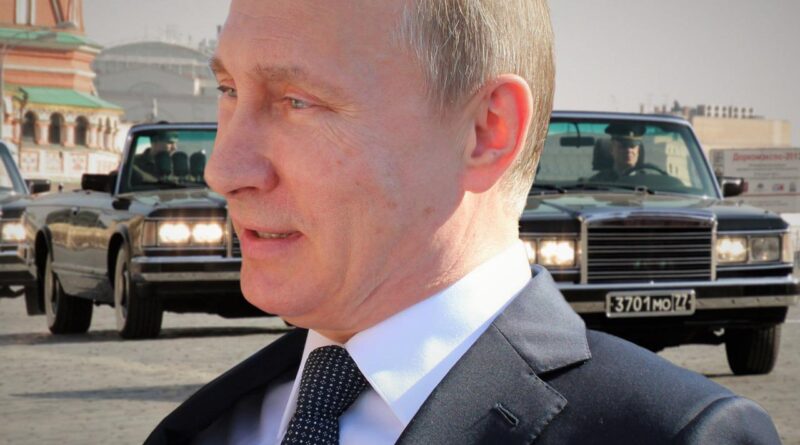Ukraine war: fears that Belarus might invade on Russia’s side are growing
As the war in Ukraine drags on and Russia’s attempts to gain significant ground in Donbas stall, concerns are being raised once again about the possibility of Belarus opening a second front. This, so the logic goes, would require Ukraine to redeploy forces from the front lines in the east and make it easier for Russia to capture more territory there. This risk now appears heightened in the context of a Lithuanian ban on the transit of certain goods from Russia through Belarus and Lithuania to the Russian exclave of Kaliningrad.
Read more: Kaliningrad: Russia’s ‘unsinkable aircraft carrier’ deep in Nato territory
Ukrainian officials, however, appear less worried. The president, Volodymyr Zelensky, in an interview on June 6, deemed the risk of an invasion from Belarus minimal. It’s a view also held by Zelensky’s chief of staff, Andriy Yermak, and similarly endorsed by the secretary of Ukraine’s National Security and Defense Council, Oleksiy Danilov.
Belarusian and Ukrainian military and security experts also assess the possibility of Belarus entering the war against Ukraine as small. There is a prominent school of thought that there has been no actual proof of pressure from Moscow the Belarus president, Alexander Lukashenko, to join the war – and rather that it is a bargaining tool for the Belarusian president to improve his damaged relations with the west by demonstrating that he can resist Putin´s pressure.
Yet, over May and June 2022 there has been an increase in military activities along the Belarus-Ukraine border. Russia has deployed Iskander, Pantsir and S-400 missile systems in the area. Lukashenko, has reportedly decided to create a southern command and expand the country’s armed forces to 80,000 from its current strength of 65,000. Belarus has also held further military exercises. Perhaps most worryingly, Lukashenko also hinted that his forces might have to “fight for western Ukraine” so that it is “not chopped off by the west”.
It’s somewhat reminiscent of the situation in late March, when similar concerns were raised that Belarus might join the Russian aggression against Ukraine. It did not happen then, so the the question is whether anything has changed that increases the risk it might happen now?
What has changed
First, there are significant differences on the battlefield. Back in March, Russian troops were still besieging Kyiv. Since then, they have been redeployed in Donbas. According to the Institute for the Study of War, Ukrainian forces have also launched successful counteroffensives around Kharkiv in the north and Kherson and Zaporozhia in the south. At the same time, Russia has made incremental, but important gains in Donbas.
Second, western support for Ukraine has further increased. Sanctions against Russia have been extended and the European Commission has recommended that Ukraine be given official candidate status for EU membership.
Moreover, while Kyiv’s western allies recognise that the war in Ukraine could possibly last for years, the Ukrainian determination to win appears stronger than ever. Formal negotiations with Russia have been suspended since the end of May and are unlikely to resume before the end of the summer.
Not everything has changed, though. Public opinion in Belarus remains firmly against involvement into the war with Ukraine. Moreover, according to a Chatham House survey, 40% of Belarusians do not support Russia’s war, compared to 32% who do, while around half of those questioned see predominately negative consequences of the war for Belarus (53%) and for themselves (48%).
The Belarusian military and security services are also aware of the determined and skilful resistance that Ukrainian forces have put up against Russia and the risks that they would therefore be running if they entered the war against Ukraine. This, in turn, means that the risk to Lukashenko himself remains that he might lose his grip on power, a grip which depends heavily on the loyalty of his armed forces.
Putin pressure
On the other hand, however, Putin’s control of Belarus is near total. This is partly a result of worsening relations between Belarus and the west, especially since the crackdown on protests after the contested presidential elections in August 2020, the hijacking of a Ryanair flight in order to detain a dissident journalist, Roman Protasevich, and the 2021 migrant crisis during which Lukashenko tried to pressure the west to lift sanctions imposed on his illegitimate regime. The resulting leverage that the Kremlin has may simply leave Belarusian president with very few options if Putin decides that the only pathway to success for him in his war in Ukraine is through Belarus.
This need not imply a full-scale invasion by the Belarusian army into Ukraine. But it could involve a gradual escalation: more military exercises at the border, false-flag operations, incursions by special forces and missile attacks from Belarusian territory on the Ukrainian capital and major population centres. Belarus could also threaten western supply lines, especially along the Ukrainian-Polish border. At a minimum, this would cause further destruction in Ukraine and possibly tie up Ukrainian forces meaning they are drawn away from what is currently the main theatre of operations in Donbas.
While not constituting the worst-case scenario of Belarus actually joining in active combat operations, even such a gradual escalation would be bad news. It would complicate the military situation for Ukraine. Belarus, too, would likely be dragged deeper and deeper into the war, which has become a more realistic possibility with Russia threatening retaliation over Lithuania’s decision to bloc sanctioned goods from entering Kaliningrad via rail from Belarus.
Ultimately, Belarus may not be on the brink of being plunged into war quite yet, but its options to avoid such a disaster are narrowing.

